Starch-based
PLA (Polylactic Acid)
Wood-based
Paper
Pulp
Flexible Packaging
Rigid Packaging
Containers
Bags
Films
Food Packaging
Beverage Packaging
Snack Packaging
Confectionery Packaging
Dairy Packaging
Retail
Food Service
Household
E-commerce
North America
Europe
South America
Asia Pacific
Middle East and Africa
North America Outlook (USD Billion, 2019-2035)
North America Food Biodegradable Packaging Market by Material Type
Starch-based
PLA (Polylactic Acid)
Wood-based
Paper
Pulp
North America Food Biodegradable Packaging Market by Packaging Type
Flexible Packaging
Rigid Packaging
Containers
Bags
Films
North America Food Biodegradable Packaging Market by Application Type
Food Packaging
Beverage Packaging
Snack Packaging
Confectionery Packaging
Dairy Packaging
North America Food Biodegradable Packaging Market by End Use Type
Retail
Food Service
Household
E-commerce
North America Food Biodegradable Packaging Market by Regional Type
US
Canada
US Outlook (USD Billion, 2019-2035)
US Food Biodegradable Packaging Market by Material Type
Starch-based
PLA (Polylactic Acid)
Wood-based
Paper
Pulp
US Food Biodegradable Packaging Market by Packaging Type
Flexible Packaging
Rigid Packaging
Containers
Bags
Films
US Food Biodegradable Packaging Market by Application Type
Food Packaging
Beverage Packaging
Snack Packaging
Confectionery Packaging
Dairy Packaging
US Food Biodegradable Packaging Market by End Use Type
Retail
Food Service
Household
E-commerce
CANADA Outlook (USD Billion, 2019-2035)
CANADA Food Biodegradable Packaging Market by Material Type
Starch-based
PLA (Polylactic Acid)
Wood-based
Paper
Pulp
CANADA Food Biodegradable Packaging Market by Packaging Type
Flexible Packaging
Rigid Packaging
Containers
Bags
Films
CANADA Food Biodegradable Packaging Market by Application Type
Food Packaging
Beverage Packaging
Snack Packaging
Confectionery Packaging
Dairy Packaging
CANADA Food Biodegradable Packaging Market by End Use Type
Retail
Food Service
Household
E-commerce
Europe Outlook (USD Billion, 2019-2035)
Europe Food Biodegradable Packaging Market by Material Type
Starch-based
PLA (Polylactic Acid)
Wood-based
Paper
Pulp
Europe Food Biodegradable Packaging Market by Packaging Type
Flexible Packaging
Rigid Packaging
Containers
Bags
Films
Europe Food Biodegradable Packaging Market by Application Type
Food Packaging
Beverage Packaging
Snack Packaging
Confectionery Packaging
Dairy Packaging
Europe Food Biodegradable Packaging Market by End Use Type
Retail
Food Service
Household
E-commerce
Europe Food Biodegradable Packaging Market by Regional Type
Germany
UK
France
Russia
Italy
Spain
Rest of Europe
GERMANY Outlook (USD Billion, 2019-2035)
GERMANY Food Biodegradable Packaging Market by Material Type
Starch-based
PLA (Polylactic Acid)
Wood-based
Paper
Pulp
GERMANY Food Biodegradable Packaging Market by Packaging Type
Flexible Packaging
Rigid Packaging
Containers
Bags
Films
GERMANY Food Biodegradable Packaging Market by Application Type
Food Packaging
Beverage Packaging
Snack Packaging
Confectionery Packaging
Dairy Packaging
GERMANY Food Biodegradable Packaging Market by End Use Type
Retail
Food Service
Household
E-commerce
UK Outlook (USD Billion, 2019-2035)
UK Food Biodegradable Packaging Market by Material Type
Starch-based
PLA (Polylactic Acid)
Wood-based
Paper
Pulp
UK Food Biodegradable Packaging Market by Packaging Type
Flexible Packaging
Rigid Packaging
Containers
Bags
Films
UK Food Biodegradable Packaging Market by Application Type
Food Packaging
Beverage Packaging
Snack Packaging
Confectionery Packaging
Dairy Packaging
UK Food Biodegradable Packaging Market by End Use Type
Retail
Food Service
Household
E-commerce
FRANCE Outlook (USD Billion, 2019-2035)
FRANCE Food Biodegradable Packaging Market by Material Type
Starch-based
PLA (Polylactic Acid)
Wood-based
Paper
Pulp
FRANCE Food Biodegradable Packaging Market by Packaging Type
Flexible Packaging
Rigid Packaging
Containers
Bags
Films
FRANCE Food Biodegradable Packaging Market by Application Type
Food Packaging
Beverage Packaging
Snack Packaging
Confectionery Packaging
Dairy Packaging
FRANCE Food Biodegradable Packaging Market by End Use Type
Retail
Food Service
Household
E-commerce
RUSSIA Outlook (USD Billion, 2019-2035)
RUSSIA Food Biodegradable Packaging Market by Material Type
Starch-based
PLA (Polylactic Acid)
Wood-based
Paper
Pulp
RUSSIA Food Biodegradable Packaging Market by Packaging Type
Flexible Packaging
Rigid Packaging
Containers
Bags
Films
RUSSIA Food Biodegradable Packaging Market by Application Type
Food Packaging
Beverage Packaging
Snack Packaging
Confectionery Packaging
Dairy Packaging
RUSSIA Food Biodegradable Packaging Market by End Use Type
Retail
Food Service
Household
E-commerce
ITALY Outlook (USD Billion, 2019-2035)
ITALY Food Biodegradable Packaging Market by Material Type
Starch-based
PLA (Polylactic Acid)
Wood-based
Paper
Pulp
ITALY Food Biodegradable Packaging Market by Packaging Type
Flexible Packaging
Rigid Packaging
Containers
Bags
Films
ITALY Food Biodegradable Packaging Market by Application Type
Food Packaging
Beverage Packaging
Snack Packaging
Confectionery Packaging
Dairy Packaging
ITALY Food Biodegradable Packaging Market by End Use Type
Retail
Food Service
Household
E-commerce
SPAIN Outlook (USD Billion, 2019-2035)
SPAIN Food Biodegradable Packaging Market by Material Type
Starch-based
PLA (Polylactic Acid)
Wood-based
Paper
Pulp
SPAIN Food Biodegradable Packaging Market by Packaging Type
Flexible Packaging
Rigid Packaging
Containers
Bags
Films
SPAIN Food Biodegradable Packaging Market by Application Type
Food Packaging
Beverage Packaging
Snack Packaging
Confectionery Packaging
Dairy Packaging
SPAIN Food Biodegradable Packaging Market by End Use Type
Retail
Food Service
Household
E-commerce
REST OF EUROPE Outlook (USD Billion, 2019-2035)
REST OF EUROPE Food Biodegradable Packaging Market by Material Type
Starch-based
PLA (Polylactic Acid)
Wood-based
Paper
Pulp
REST OF EUROPE Food Biodegradable Packaging Market by Packaging Type
Flexible Packaging
Rigid Packaging
Containers
Bags
Films
REST OF EUROPE Food Biodegradable Packaging Market by Application Type
Food Packaging
Beverage Packaging
Snack Packaging
Confectionery Packaging
Dairy Packaging
REST OF EUROPE Food Biodegradable Packaging Market by End Use Type
Retail
Food Service
Household
E-commerce
APAC Outlook (USD Billion, 2019-2035)
APAC Food Biodegradable Packaging Market by Material Type
Starch-based
PLA (Polylactic Acid)
Wood-based
Paper
Pulp
APAC Food Biodegradable Packaging Market by Packaging Type
Flexible Packaging
Rigid Packaging
Containers
Bags
Films
APAC Food Biodegradable Packaging Market by Application Type
Food Packaging
Beverage Packaging
Snack Packaging
Confectionery Packaging
Dairy Packaging
APAC Food Biodegradable Packaging Market by End Use Type
Retail
Food Service
Household
E-commerce
APAC Food Biodegradable Packaging Market by Regional Type
China
India
Japan
South Korea
Malaysia
Thailand
Indonesia
Rest of APAC
CHINA Outlook (USD Billion, 2019-2035)
CHINA Food Biodegradable Packaging Market by Material Type
Starch-based
PLA (Polylactic Acid)
Wood-based
Paper
Pulp
CHINA Food Biodegradable Packaging Market by Packaging Type
Flexible Packaging
Rigid Packaging
Containers
Bags
Films
CHINA Food Biodegradable Packaging Market by Application Type
Food Packaging
Beverage Packaging
Snack Packaging
Confectionery Packaging
Dairy Packaging
CHINA Food Biodegradable Packaging Market by End Use Type
Retail
Food Service
Household
E-commerce
INDIA Outlook (USD Billion, 2019-2035)
INDIA Food Biodegradable Packaging Market by Material Type
Starch-based
PLA (Polylactic Acid)
Wood-based
Paper
Pulp
INDIA Food Biodegradable Packaging Market by Packaging Type
Flexible Packaging
Rigid Packaging
Containers
Bags
Films
INDIA Food Biodegradable Packaging Market by Application Type
Food Packaging
Beverage Packaging
Snack Packaging
Confectionery Packaging
Dairy Packaging
INDIA Food Biodegradable Packaging Market by End Use Type
Retail
Food Service
Household
E-commerce
JAPAN Outlook (USD Billion, 2019-2035)
JAPAN Food Biodegradable Packaging Market by Material Type
Starch-based
PLA (Polylactic Acid)
Wood-based
Paper
Pulp
JAPAN Food Biodegradable Packaging Market by Packaging Type
Flexible Packaging
Rigid Packaging
Containers
Bags
Films
JAPAN Food Biodegradable Packaging Market by Application Type
Food Packaging
Beverage Packaging
Snack Packaging
Confectionery Packaging
Dairy Packaging
JAPAN Food Biodegradable Packaging Market by End Use Type
Retail
Food Service
Household
E-commerce
SOUTH KOREA Outlook (USD Billion, 2019-2035)
SOUTH KOREA Food Biodegradable Packaging Market by Material Type
Starch-based
PLA (Polylactic Acid)
Wood-based
Paper
Pulp
SOUTH KOREA Food Biodegradable Packaging Market by Packaging Type
Flexible Packaging
Rigid Packaging
Containers
Bags
Films
SOUTH KOREA Food Biodegradable Packaging Market by Application Type
Food Packaging
Beverage Packaging
Snack Packaging
Confectionery Packaging
Dairy Packaging
SOUTH KOREA Food Biodegradable Packaging Market by End Use Type
Retail
Food Service
Household
E-commerce
MALAYSIA Outlook (USD Billion, 2019-2035)
MALAYSIA Food Biodegradable Packaging Market by Material Type
Starch-based
PLA (Polylactic Acid)
Wood-based
Paper
Pulp
MALAYSIA Food Biodegradable Packaging Market by Packaging Type
Flexible Packaging
Rigid Packaging
Containers
Bags
Films
MALAYSIA Food Biodegradable Packaging Market by Application Type
Food Packaging
Beverage Packaging
Snack Packaging
Confectionery Packaging
Dairy Packaging
MALAYSIA Food Biodegradable Packaging Market by End Use Type
Retail
Food Service
Household
E-commerce
THAILAND Outlook (USD Billion, 2019-2035)
THAILAND Food Biodegradable Packaging Market by Material Type
Starch-based
PLA (Polylactic Acid)
Wood-based
Paper
Pulp
THAILAND Food Biodegradable Packaging Market by Packaging Type
Flexible Packaging
Rigid Packaging
Containers
Bags
Films
THAILAND Food Biodegradable Packaging Market by Application Type
Food Packaging
Beverage Packaging
Snack Packaging
Confectionery Packaging
Dairy Packaging
THAILAND Food Biodegradable Packaging Market by End Use Type
Retail
Food Service
Household
E-commerce
INDONESIA Outlook (USD Billion, 2019-2035)
INDONESIA Food Biodegradable Packaging Market by Material Type
Starch-based
PLA (Polylactic Acid)
Wood-based
Paper
Pulp
INDONESIA Food Biodegradable Packaging Market by Packaging Type
Flexible Packaging
Rigid Packaging
Containers
Bags
Films
INDONESIA Food Biodegradable Packaging Market by Application Type
Food Packaging
Beverage Packaging
Snack Packaging
Confectionery Packaging
Dairy Packaging
INDONESIA Food Biodegradable Packaging Market by End Use Type
Retail
Food Service
Household
E-commerce
REST OF APAC Outlook (USD Billion, 2019-2035)
REST OF APAC Food Biodegradable Packaging Market by Material Type
Starch-based
PLA (Polylactic Acid)
Wood-based
Paper
Pulp
REST OF APAC Food Biodegradable Packaging Market by Packaging Type
Flexible Packaging
Rigid Packaging
Containers
Bags
Films
REST OF APAC Food Biodegradable Packaging Market by Application Type
Food Packaging
Beverage Packaging
Snack Packaging
Confectionery Packaging
Dairy Packaging
REST OF APAC Food Biodegradable Packaging Market by End Use Type
Retail
Food Service
Household
E-commerce
South America Outlook (USD Billion, 2019-2035)
South America Food Biodegradable Packaging Market by Material Type
Starch-based
PLA (Polylactic Acid)
Wood-based
Paper
Pulp
South America Food Biodegradable Packaging Market by Packaging Type
Flexible Packaging
Rigid Packaging
Containers
Bags
Films
South America Food Biodegradable Packaging Market by Application Type
Food Packaging
Beverage Packaging
Snack Packaging
Confectionery Packaging
Dairy Packaging
South America Food Biodegradable Packaging Market by End Use Type
Retail
Food Service
Household
E-commerce
South America Food Biodegradable Packaging Market by Regional Type
Brazil
Mexico
Argentina
Rest of South America
BRAZIL Outlook (USD Billion, 2019-2035)
BRAZIL Food Biodegradable Packaging Market by Material Type
Starch-based
PLA (Polylactic Acid)
Wood-based
Paper
Pulp
BRAZIL Food Biodegradable Packaging Market by Packaging Type
Flexible Packaging
Rigid Packaging
Containers
Bags
Films
BRAZIL Food Biodegradable Packaging Market by Application Type
Food Packaging
Beverage Packaging
Snack Packaging
Confectionery Packaging
Dairy Packaging
BRAZIL Food Biodegradable Packaging Market by End Use Type
Retail
Food Service
Household
E-commerce
MEXICO Outlook (USD Billion, 2019-2035)
MEXICO Food Biodegradable Packaging Market by Material Type
Starch-based
PLA (Polylactic Acid)
Wood-based
Paper
Pulp
MEXICO Food Biodegradable Packaging Market by Packaging Type
Flexible Packaging
Rigid Packaging
Containers
Bags
Films
MEXICO Food Biodegradable Packaging Market by Application Type
Food Packaging
Beverage Packaging
Snack Packaging
Confectionery Packaging
Dairy Packaging
MEXICO Food Biodegradable Packaging Market by End Use Type
Retail
Food Service
Household
E-commerce
ARGENTINA Outlook (USD Billion, 2019-2035)
ARGENTINA Food Biodegradable Packaging Market by Material Type
Starch-based
PLA (Polylactic Acid)
Wood-based
Paper
Pulp
ARGENTINA Food Biodegradable Packaging Market by Packaging Type
Flexible Packaging
Rigid Packaging
Containers
Bags
Films
ARGENTINA Food Biodegradable Packaging Market by Application Type
Food Packaging
Beverage Packaging
Snack Packaging
Confectionery Packaging
Dairy Packaging
ARGENTINA Food Biodegradable Packaging Market by End Use Type
Retail
Food Service
Household
E-commerce
REST OF SOUTH AMERICA Outlook (USD Billion, 2019-2035)
REST OF SOUTH AMERICA Food Biodegradable Packaging Market by Material Type
Starch-based
PLA (Polylactic Acid)
Wood-based
Paper
Pulp
REST OF SOUTH AMERICA Food Biodegradable Packaging Market by Packaging Type
Flexible Packaging
Rigid Packaging
Containers
Bags
Films
REST OF SOUTH AMERICA Food Biodegradable Packaging Market by Application Type
Food Packaging
Beverage Packaging
Snack Packaging
Confectionery Packaging
Dairy Packaging
REST OF SOUTH AMERICA Food Biodegradable Packaging Market by End Use Type
Retail
Food Service
Household
E-commerce
MEA Outlook (USD Billion, 2019-2035)
MEA Food Biodegradable Packaging Market by Material Type
Starch-based
PLA (Polylactic Acid)
Wood-based
Paper
Pulp
MEA Food Biodegradable Packaging Market by Packaging Type
Flexible Packaging
Rigid Packaging
Containers
Bags
Films
MEA Food Biodegradable Packaging Market by Application Type
Food Packaging
Beverage Packaging
Snack Packaging
Confectionery Packaging
Dairy Packaging
MEA Food Biodegradable Packaging Market by End Use Type
Retail
Food Service
Household
E-commerce
MEA Food Biodegradable Packaging Market by Regional Type
GCC Countries
South Africa
Rest of MEA
GCC COUNTRIES Outlook (USD Billion, 2019-2035)
GCC COUNTRIES Food Biodegradable Packaging Market by Material Type
Starch-based
PLA (Polylactic Acid)
Wood-based
Paper
Pulp
GCC COUNTRIES Food Biodegradable Packaging Market by Packaging Type
Flexible Packaging
Rigid Packaging
Containers
Bags
Films
GCC COUNTRIES Food Biodegradable Packaging Market by Application Type
Food Packaging
Beverage Packaging
Snack Packaging
Confectionery Packaging
Dairy Packaging
GCC COUNTRIES Food Biodegradable Packaging Market by End Use Type
Retail
Food Service
Household
E-commerce
SOUTH AFRICA Outlook (USD Billion, 2019-2035)
SOUTH AFRICA Food Biodegradable Packaging Market by Material Type
Starch-based
PLA (Polylactic Acid)
Wood-based
Paper
Pulp
SOUTH AFRICA Food Biodegradable Packaging Market by Packaging Type
Flexible Packaging
Rigid Packaging
Containers
Bags
Films
SOUTH AFRICA Food Biodegradable Packaging Market by Application Type
Food Packaging
Beverage Packaging
Snack Packaging
Confectionery Packaging
Dairy Packaging
SOUTH AFRICA Food Biodegradable Packaging Market by End Use Type
Retail
Food Service
Household
E-commerce
REST OF MEA Outlook (USD Billion, 2019-2035)
REST OF MEA Food Biodegradable Packaging Market by Material Type
Starch-based
PLA (Polylactic Acid)
Wood-based
Paper
Pulp
REST OF MEA Food Biodegradable Packaging Market by Packaging Type
Flexible Packaging
Rigid Packaging
Containers
Bags
Films
REST OF MEA Food Biodegradable Packaging Market by Application Type
Food Packaging
Beverage Packaging
Snack Packaging
Confectionery Packaging
Dairy Packaging
REST OF MEA Food Biodegradable Packaging Market by End Use Type
Retail
Food Service
Household
E-commerce
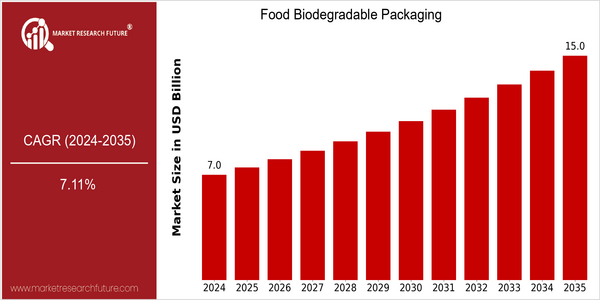
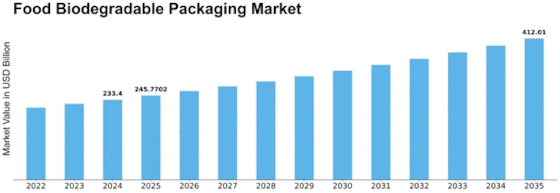

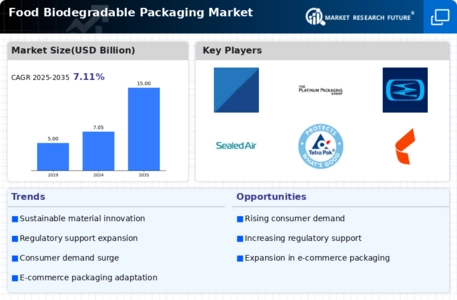


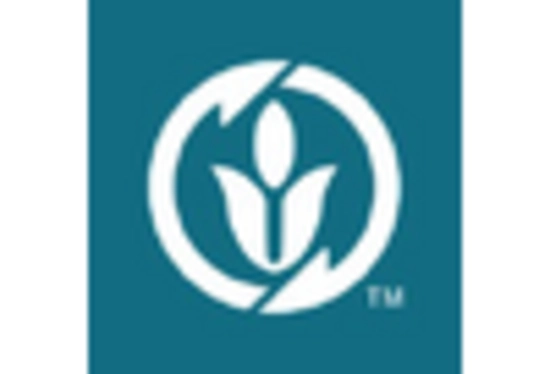
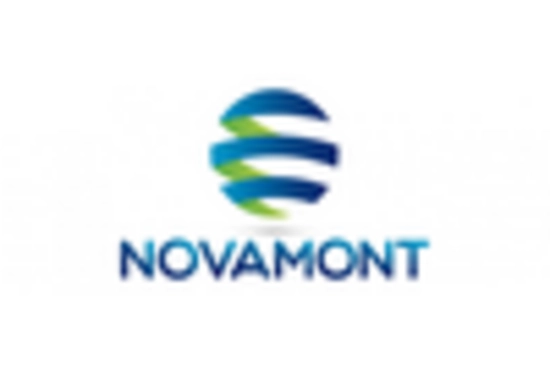
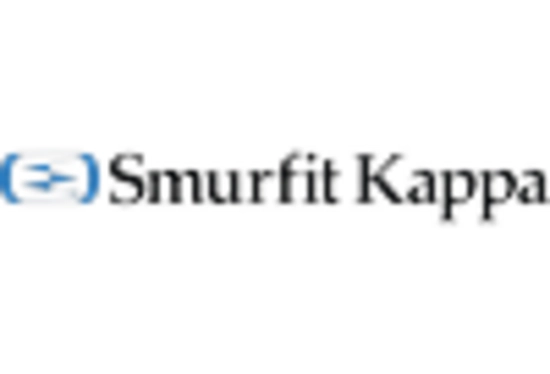
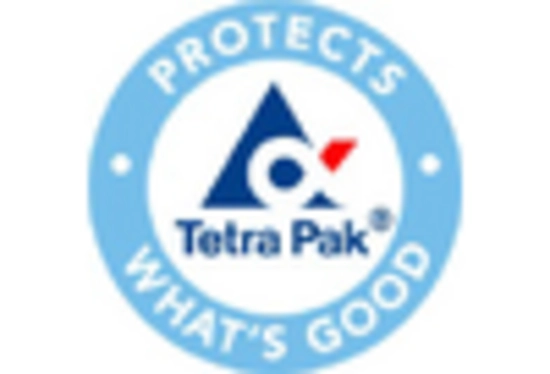

Leave a Comment